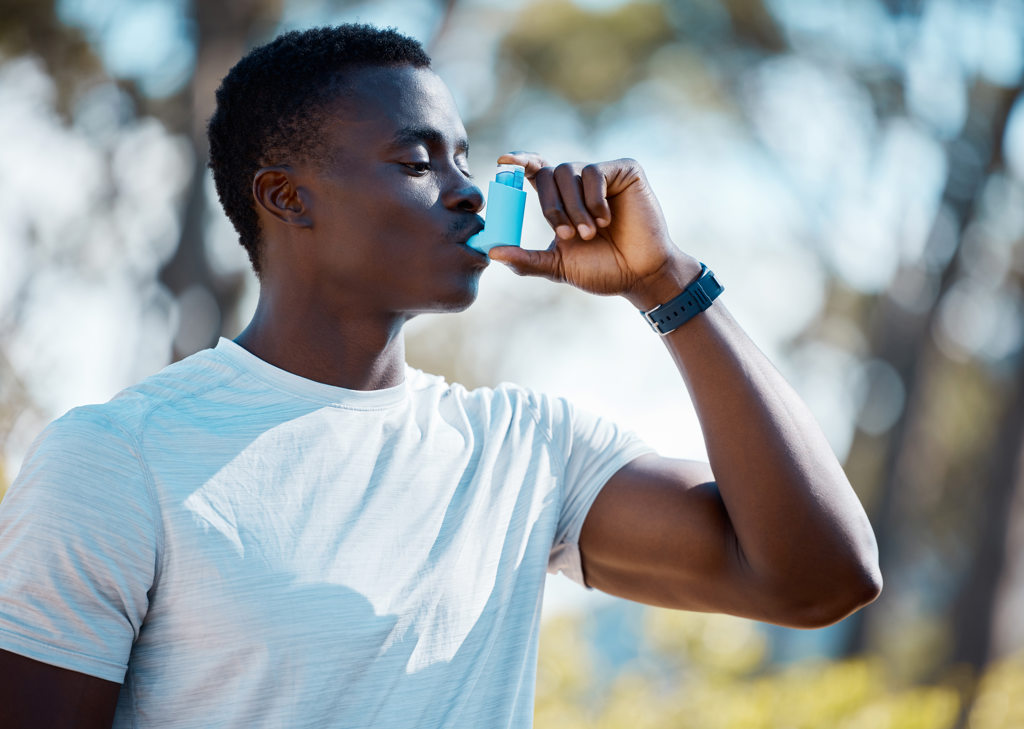Allergies Aren’t The Only Cause of Asthma
Allergy season will soon be here and that means it is asthma season too. In Pennsylvania, the prevalence of asthma in adults increased 3% between 2011 to 2019, and one in six adults in Pennsylvania experiences lifetime asthma.
Asthma is a chronic condition that causes inflammation of the airways (tubes that carry air in and out of the lungs), leading to wheezing and difficulty breathing. Severe asthma attacks can be life-threatening, which is why it is important to seek care with an expert pulmonologist to manage the condition.
Allergies and asthma often go hand in hand. In fact, allergies are involved in 50% to 80% of asthma cases, but allergic asthma isn’t the only type.
“Other types of asthma include non-allergic asthma, cough-variant asthma, nocturnal asthma, exercise-induced asthma and occupational asthma,” said Sandeep Bansal, MD, Director of The Lung Center and Interventional Pulmonology at Penn Highlands Healthcare.

Non-allergic asthma
Non-allergic asthma affects between 10% and 33% of people with asthma, and it usually develops later in life. Non-allergic asthma can be triggered by weather, such as cold or humid conditions, viral respiratory infections, stress, pollution and smoke. Because non-allergic asthma can’t be tied to a specific antigen, it’s important to work with your allergist to determine how to manage it.
Cough-variant asthma
Just like the name says, a severe cough is the primary symptom of this type of asthma. Cough-variant asthma is often underdiagnosed and undertreated, so paying attention to what triggers your cough is an important part of receiving an accurate diagnosis. Does it happen right after you wake up? After exercising? In cold, dry weather? Keep track of possible triggers and share them with your primary care provider or allergist.
Nocturnal asthma
More than 50% of people with asthma experience nocturnal asthma, which occurs when your asthma symptoms become worse at night. Nocturnal asthma is so prevalent because of the close relationship between the sleep-wake cycle, also known as circadian rhythm, and asthma.
“The sleep-wake cycle causes changes in muscle control, airway resistance, inflammation and hormones, which can exacerbate already existing asthma,” said Dr. Bansal.
Further, most asthma-related deaths occur during the night, making nocturnal asthma particularly dangerous.
Exercise-induced asthma
As many as 90% of people with any type of asthma experience exercise-induced asthma as well. But you don’t have to have asthma to experience exercise-induced asthma. When you exercise, your bronchial tubes narrow and it becomes harder to catch your breath, which can lead to an asthma attack. Symptoms of exercise-induced asthma typically occur 5 to 20 minutes after you begin and clear up within 30 minutes of stopping.
Occupational asthma
Occupational asthma occurs when you are exposed to triggers in the workplace. It can happen in almost any type of workplace, but common jobs affected include animal breeders, farmers, bakers, hairdressers, nurses, painters, manufacturing workers and woodworkers. Occupational asthma is estimated to account for 15% of all asthma cases in the U.S. Left unchecked, occupational asthma can lead to permanent lung damage. Talk to your primary care provider to learn more about your specific triggers.
Penn Highlands Healthcare provides expert pulmonary care ranging from asthma care to sleep disorder treatments, as well as the latest diagnostic tests and services to detect pulmonary diseases in their earliest, most treatable stages. For more information, visit www.phhealthcare.org/lungcare.

